For some, holidays are a time to showcase their culinary prowess and entertaining skills. Others are content to serve a basic cheese and cracker plate and call it a day for the rest of the year. While everyone enjoys a good charcuterie board, not everyone knows how to create one that looks Pinterest-worthy. Even if you fall in this category, don’t give up! Here’s how you can create an ideal charcuterie board that will make everyone in the neighbourhood envious!
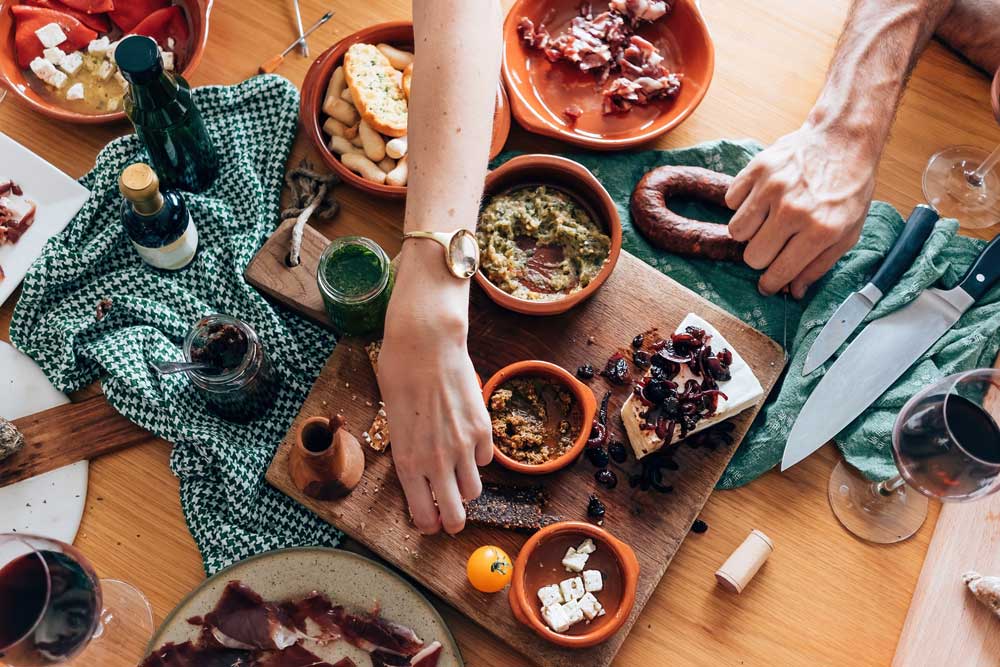
Although speciality charcuterie boards are available, any attractive platter or board will work. Many wooden versions like ‘cheese boards’ or ‘bread boards,’ have handles to make them easier to carry around. To be honest, most people don’t carry charcuterie boards around; they essentially stay in one place, so don’t really need handles. Additionally, you are not limited to using a wooden board. You can create beautiful charcuterie boards on ceramic or porcelain platters if you desire. Just ensure they are large enough to display a range of cheeses, meats, olives, fig preserves, and other foods.
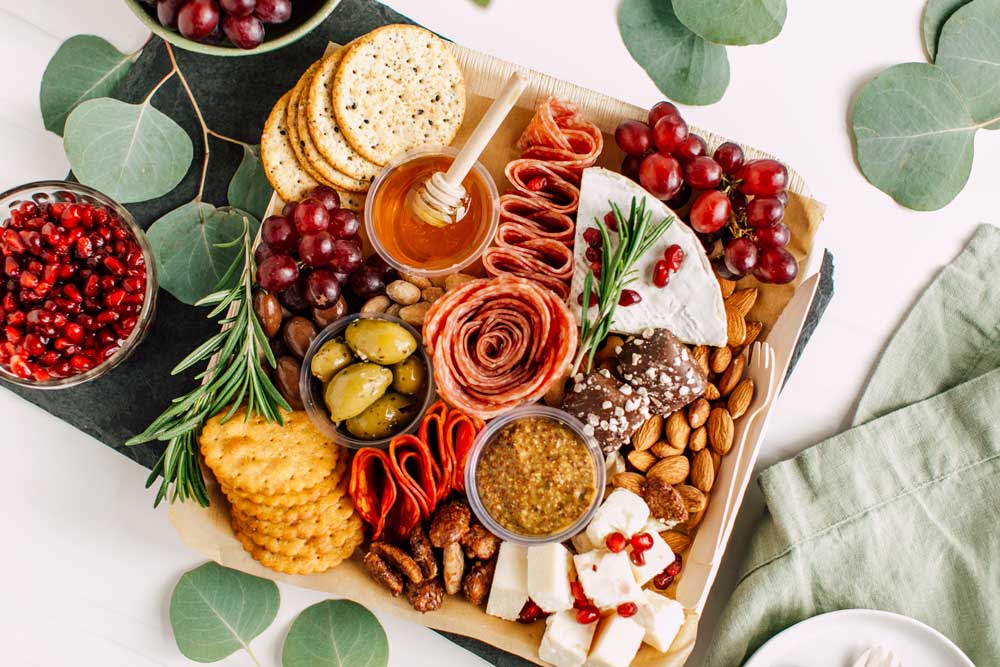
Some boards may elegantly display four or five items, while others can contain a cornucopia of stuff. Choose what you think you can do with ease. Here are some items that usually appear on a charcuterie board:
• Cured meats
• Cheese
• Cured veggies and olives
• Nuts
• Dried fruits
• Bread or baguette crackers
• Jam or jelly
Majority of the space is usually taken by meats, cheeses, and spreads, with dried fruits, nuts, and olives strewn around to fill in the gaps.
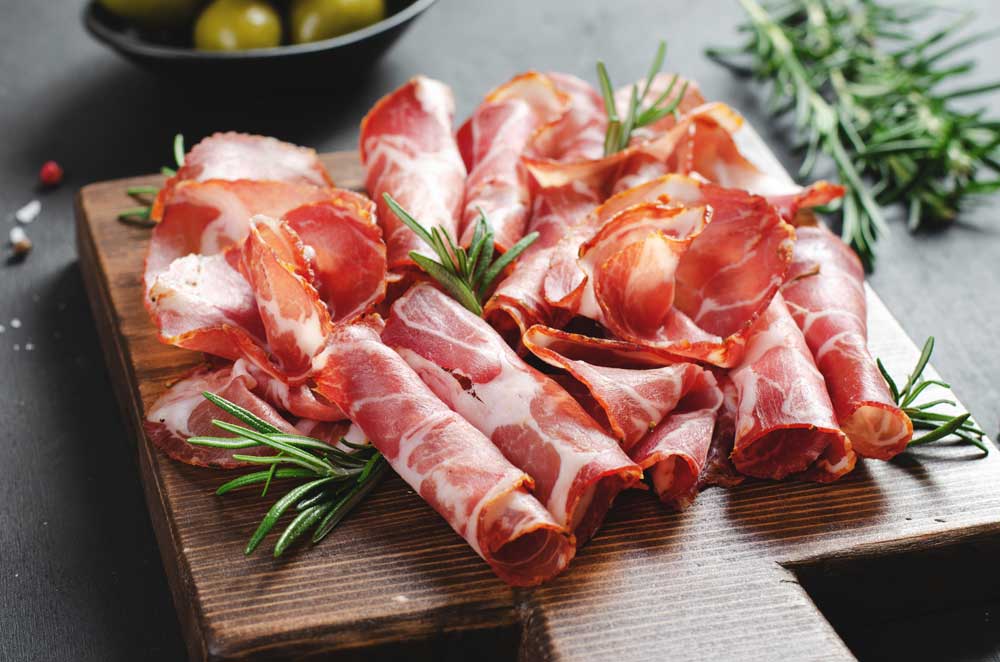
Cured Meats
Typically, thin-cured meats are those that are already pre-sliced and available in a deli, supermarket or other speciality store. Among the thin cured meats are:
• Prosciutto
• Ham
• Pancetta
• Capocollo
Place the meats in little stacks on the board because they are often thinly cut. It’s fine to have just one or two of these meats if you have a smaller board.
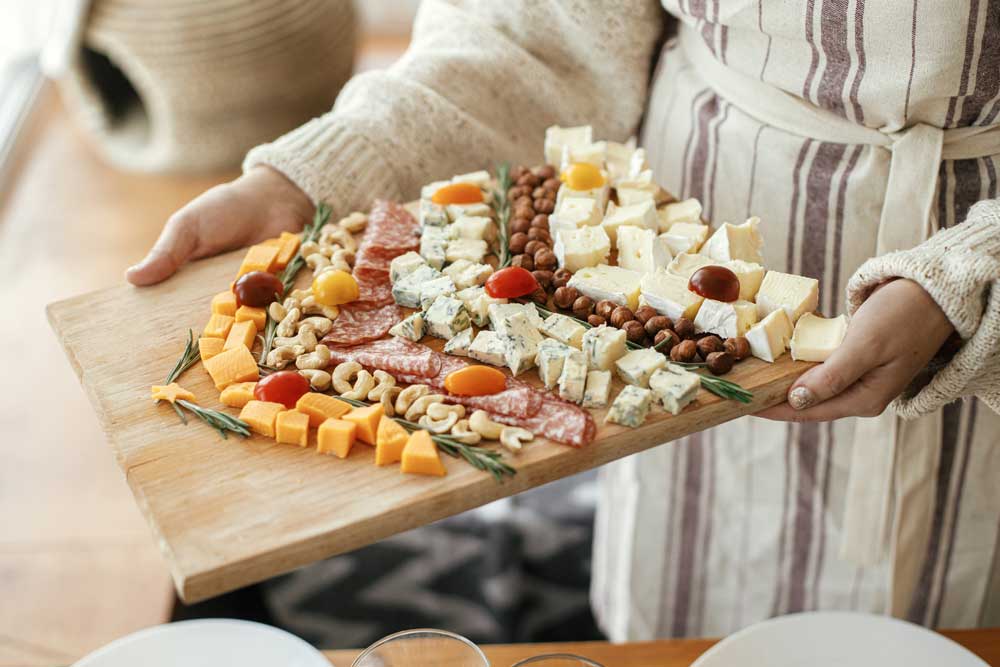
Hard Cheese
Slice these up to add to your board. Even hard cheeses need to be sliced. Source at least two varieties, and make sure the colours are different. For instance, one can be a white cheese, and another can be a deep yellow or orange. You can try aged or smoked cheeses, or stick with standard Jack or cheddar variants. Avoid using too many flavours (such as habanero cheddar) unless you want to create a regional flare that highlights spice. For a little zing, many individuals enjoy at least one ‘stinky’ cheese, like bleu cheese.
Soft Spreadable Cheese
A charcuterie board may be elevated to a whole new level with the addition of soft cheeses! Feta, brie, ricotta, camembert, chevre, roquefort, gorgonzola, cotija, goat cheese, and panela are the most popular and well-known varieties. Once again, consider varying colours and aim for a pleasing range.
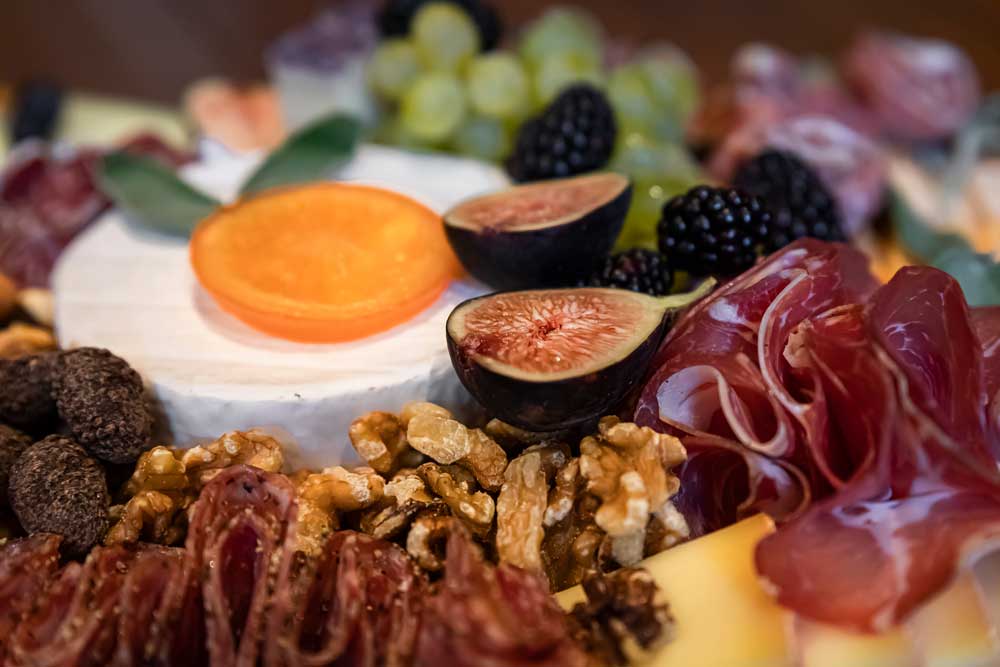
Cured Vegetables & Olives
In addition to adding a pop of colour to the board, olives and other pickled or cured vegetables such as giardiniera, go well with cured meats. To add contrast to your charcuterie board, experiment with different coloured peppers and olives.
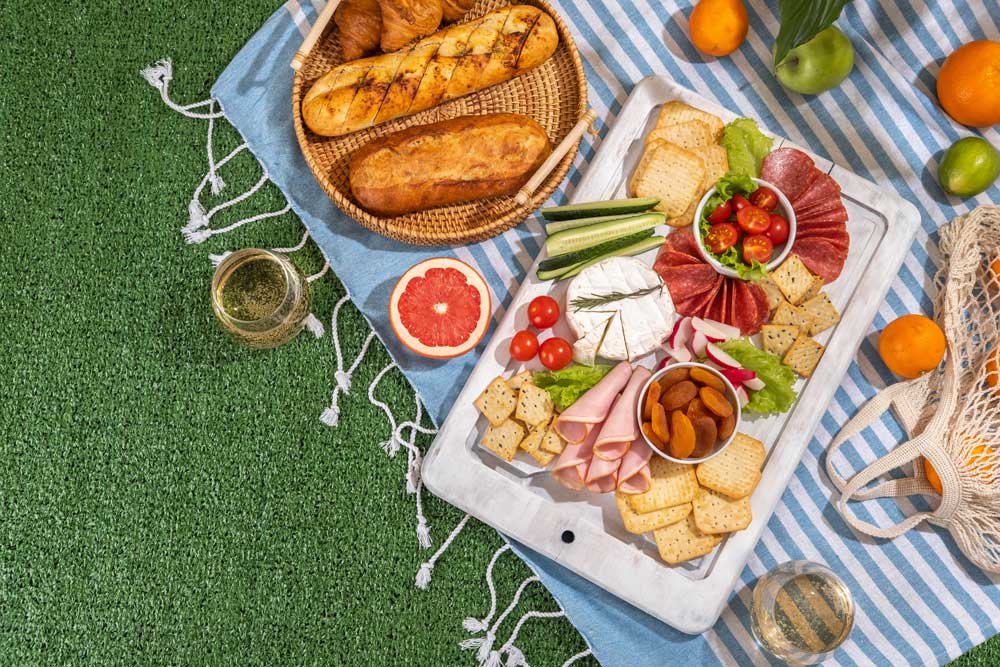
Bringing Everything Together
Arrange your cheese along with jars of fig spread, bowls of olives and jams in an artistic manner. Then, scatter different kinds of meat slices and rolled-up meats across the board. To maintain harmony in the colour scheme, scatter bread sticks and crackers to fill the empty area. Then, add fruit, nuts, and herbs. The key to a beautiful and tempting-looking board is to add a wide range of meat and cheese alternatives, several fresh products, varying in colours and textures. A charcuterie board can be made in any style, but for a masterpiece, remember these pointers:
• Include brief tags explaining the nature of each item.
• Avoid choosing anything with an overpowering flavour or scent.
• Aim for about two ounces of charcuterie per person if it’s an appetiser or starter course
• Remember to bring cheese knives, napkins, and aesthetic spreaders. Every cheese needs to have its own knife.
• Set up small forks, picks, or tongs so that people can pick up items like pickled veggies, thin meats, and olives.
• Sort into groups, starting with crackers, cheeses, and meats. Add nuts, fruit, and spreads to the remaining areas.
With these pointers, we’re sure that your charcuterie board will be a huge hit!